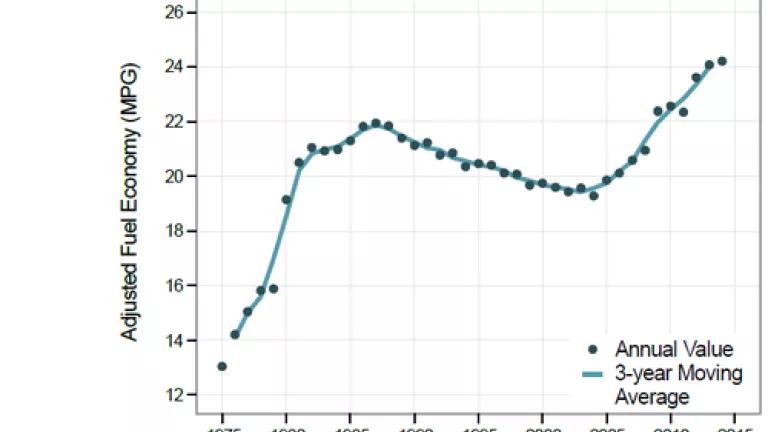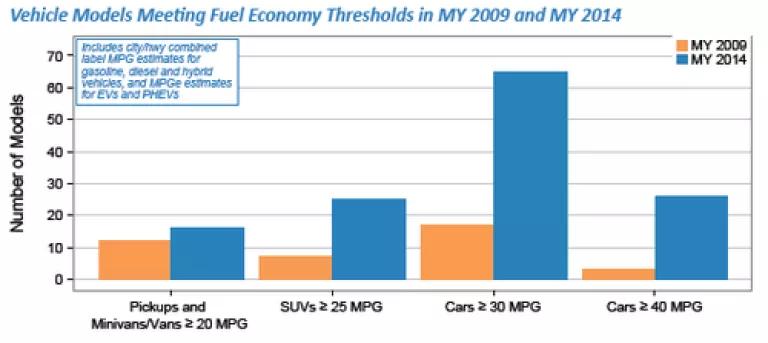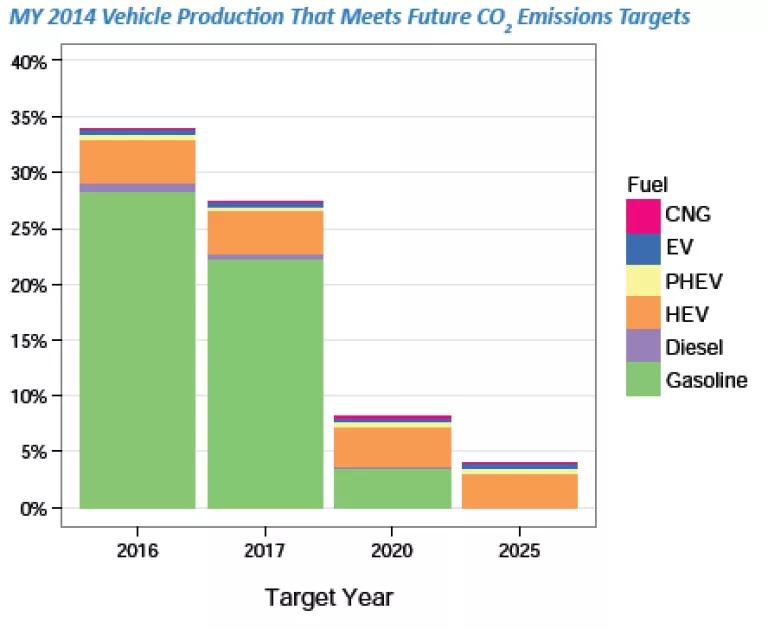
The U.S. Environmental Protection Agency has crunched the numbers and the fleet of cars and light trucks sold with model year 2013 hit a new record of 24.1 miles per gallon (mpg). The latest Fuel Economy Trends report finds that automakers are producing more fuel-saving vehicles to keep up with clean car and fuel economy standards.
This is good news for the environment. By burning less fuel, the more efficient new car fleet also avoids emissions of millions of tons of carbon pollution each year.
Consumers benefit too. Just five years earlier, in 2008, passenger cars averaged 21 mpg. Assuming gas prices of $3.50 per gallon, a 3-mpg jump to 24 mpg will save a typical driver over $300 in the first year of driving.
Credit: EPA Fuel Economy Trends
It’s no surprise that consumers want better fuel economy. According to a recent survey by the National Automobile Dealers Association, fuel economy is the number 1 factor considered by shoppers during a new car and light truck purchase. The Consumer Federation of America expects this to be an on-going trend where car buyers seek higher fuel efficiency with each new purchase.
Fuel Economy Leaders and Laggards
With the exception of Ford and Toyota, all manufacturers increased their fleet average fuel economy, as shown below. Nissan achieved the biggest improvement from 2012 with a 2.1 mpg boost that moved the automaker up in the rankings. Hyundai and Kia are not presented in the table until EPA reaches full resolution on prior improper fuel economy data submittals for some of their vehicles. If included, their actual performance is expected to put them within the top 3.

Credit: EPA Fuel Economy Trends
Compared to 2012, Ford improved the fuel economy of both their cars and trucks but a shift to higher truck production volumes reduced their overall fleet average. Similarly, despite improvements in Toyota truck fuel economy, the greater production share of larger, lower fuel economy vehicles reduced the manufacturer’s fleet average.
Looking at preliminary data for model year 2014, the fleet average is expected to make a very modest increase to 24.2 mpg. This is clearly something to watch and consider in the context of potentially larger improvements with model year 2015 vehicles arriving in showrooms now. Multi-year product design cycles can mean that fleet improvements don’t follow the same trajectory year over year.
More Fuel Efficient Options for Consumers
Looking at recently available models, it’s clear that consumers can choose from an expanding list of fuel-efficient cars and light trucks.
Car models achieving at least 30 mpg has more than tripled in five years. Car models exceeding 40 mpg have increased by a factor of 8 due mainly to the growth in hybrid, plug-in hybrid electric and battery electric vehicles being offered.

Credit: EPA Fuel Economy Trends
Fuel-saving Technology Deployment without a Performance Sacrifice
Automakers are ramping up fuel economy by increasing deployment of known technologies in conventional internal combustion engine vehicles. Since first introduced in limited models in 2007, more efficient gasoline direct injection engines are now used in roughly on third of the fleet. Transmissions have advanced to use more gears that allow the engine to operate more frequently at its most efficient points even as road conditions change. In 2008, 75 percent of transmissions were either 4- or 5-speed. Now, over 70 percent have 6 or more speeds, with nearly 10 percent with 8 speeds. Another 20 percent of transmissions are continuously variable, allowing for further efficiency optimization.
The Fuel Economy Trends data shows that better fuel efficiency is being achieved while at least maintaining other vehicle performance measures, such as 0-60 miles per hour acceleration. Compared to calculations starting with the 1975 fleet, EPA expects 2014 vehicles to have the fastest in 0-60 mph time, averaging 8.2 seconds.

Credit: EPA Fuel Economy Trends
Building for the Future
Clean car and fuel economy standards will continue to strengthen, reaching the equivalent of 54.5 mpg in laboratory tests in 2025. The standards set a clear trajectory and market certainty to guide auto industry investments in fuel-saving technologies and promote continued innovation. As shown below, significant portions of the current fleet already meet future standards.

Credit: EPA Fuel Economy Trends
With fuel economy reaching new heights each year, automobiles are guzzling less gas, saving consumers’ money and reducing carbon pollution. Producing cleaner, more efficient cars moves us in the right direction by helping to strengthen our economy and protect our environment.

